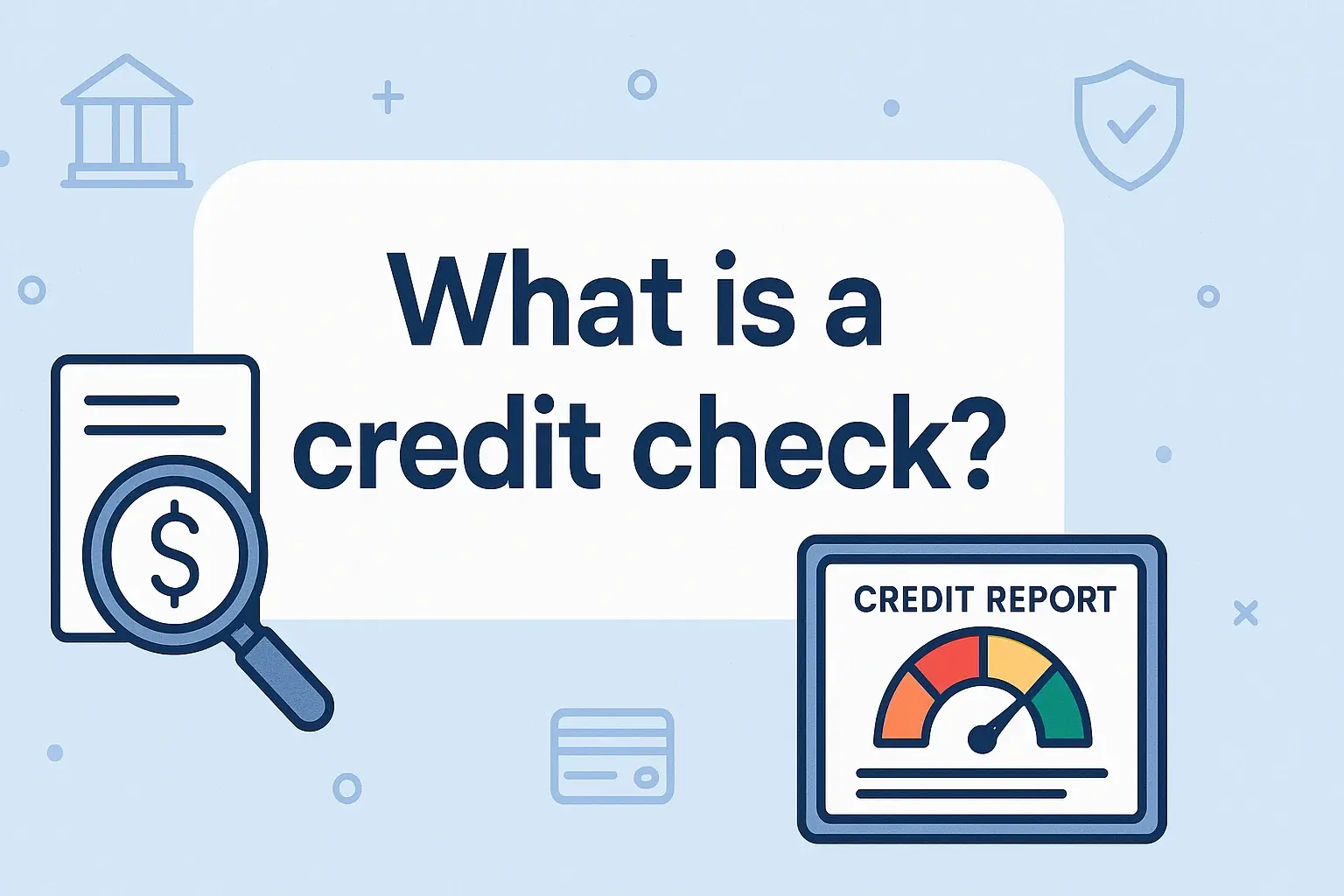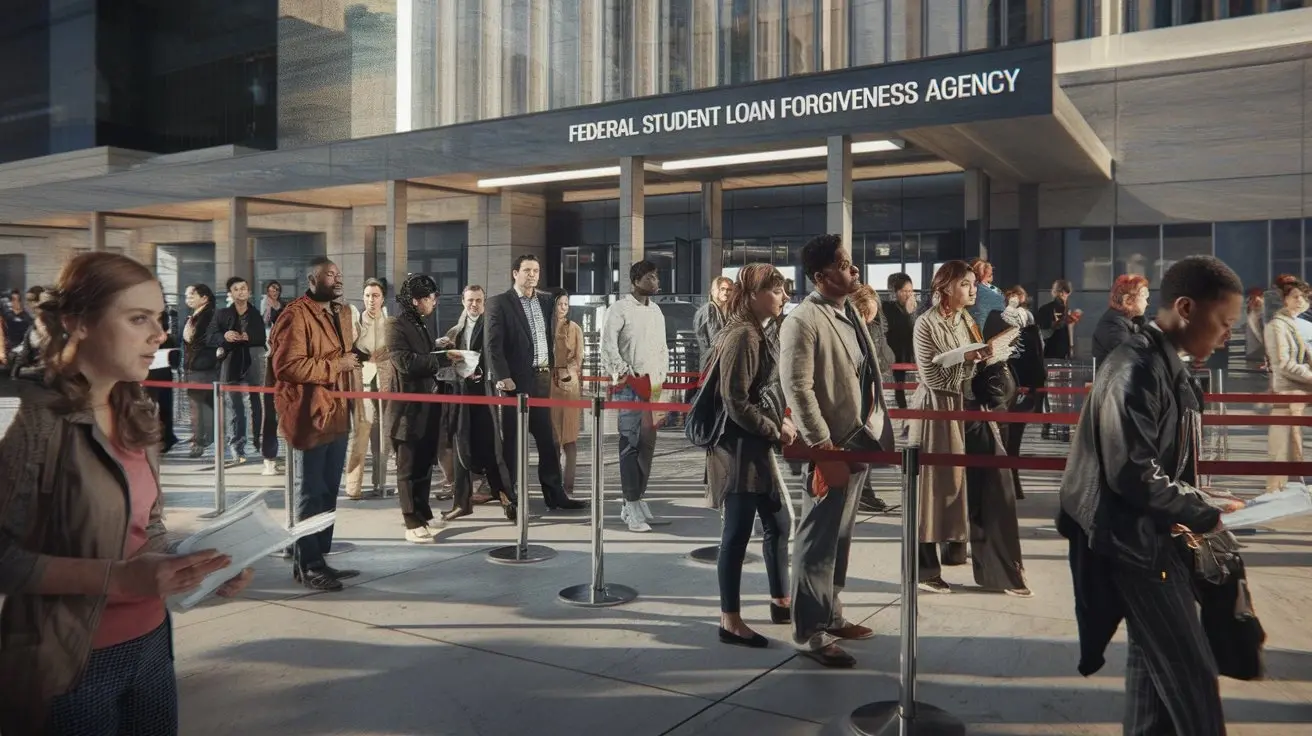-
Posted on: 21 Dec 2022

-
Fact 1: Your Credit Report is a Living Document, Not a Static Judgment
In 2025, understanding your credit report is more crucial than ever. Many individuals view their credit report as a final verdict on their financial health, a fixed score that dictates their borrowing destiny. This couldn't be further from the truth. Your credit report is a dynamic, ever-evolving record of your financial behavior. It's a detailed history compiled by credit bureaus based on information provided by your creditors. This includes payment history, amounts owed, length of credit history, new credit, and credit mix. The key takeaway here is that it's a *report*, a snapshot in time, and it can and *should* be updated and corrected if inaccuracies exist. Think of it as a medical record; if there's a misdiagnosis, you wouldn't accept it as final, would you? Similarly, inaccuracies on your credit report can significantly impact your ability to secure loans, rent an apartment, or even get a job. In 2025, with the increasing reliance on digital financial footprints, the accuracy and completeness of your credit report are paramount. This fact underscores the importance of regular monitoring and the right to dispute errors.
Understanding the Components of Your Credit Report
Your credit report is segmented into several key areas, each contributing to your overall creditworthiness. By understanding these components, you can better assess your financial standing and identify areas for improvement. The primary sections include:
- Personal Information: This section contains your name, address, Social Security number, and employment history. While seemingly straightforward, errors here can sometimes lead to identity theft or confusion between similar individuals.
- Credit Accounts: This is the heart of your report. It lists all your open and closed credit accounts, including credit cards, loans (mortgages, auto loans, student loans), and lines of credit. For each account, you'll find details like the creditor's name, account number (often partially masked), the date the account was opened, the credit limit or loan amount, the current balance, and your payment history.
- Public Records: This section includes significant financial events that have been publicly recorded. In the past, this might have included bankruptcies, tax liens, and civil judgments. While some of these are being removed from reports after a certain period (as mandated by law), their presence has a substantial negative impact.
- Credit Inquiries: Every time you apply for new credit, a lender typically pulls your credit report. This results in an inquiry. There are two types: hard inquiries (when you apply for credit) and soft inquiries (which don't affect your score, like checking your own credit). Too many hard inquiries in a short period can signal to lenders that you're a higher risk.
The Dynamic Nature of Credit Data
The information on your credit report is not static. Creditors report updates to the credit bureaus regularly, often monthly. This means your report is constantly being refreshed. This dynamism is precisely why it's so important to check it frequently. A mistake made by a creditor today could be reflected on your report tomorrow. Conversely, positive actions you take, like making on-time payments, will also be updated and contribute to a healthier credit profile over time. In 2025, the speed at which data is updated is even faster due to advancements in financial technology. This rapid update cycle means that while errors can appear quickly, so can the positive impact of your diligent financial management.
Why Regular Monitoring is Non-Negotiable in 2025
The most compelling reason to treat your credit report as a living document is to catch errors. The Consumer Financial Protection Bureau (CFPB) estimates that about 1 in 5 consumers have an error on at least one of their credit reports. These errors can range from minor typos to significant inaccuracies like accounts you never opened or incorrect late payment markers. Such errors can:
- Lower your credit score, making it harder and more expensive to borrow money.
- Lead to denial of rental applications or higher security deposits.
- Affect your ability to get approved for insurance policies or even certain jobs.
- In extreme cases, be a sign of identity theft.
In 2025, with the rise of sophisticated data breaches, identity theft is a persistent threat. Regularly reviewing your credit reports from all three major bureaus (Equifax, Experian, and TransUnion) is your first line of defense. You are entitled to a free credit report from each bureau annually via AnnualCreditReport.com. Some services also offer more frequent monitoring, which can be invaluable.
The Impact of Inaccuracies
Imagine applying for a mortgage and being denied because an old, erroneous late payment from a forgotten account appears on your report. Or perhaps a fraudulent account opened in your name is dragging down your score. These are not hypothetical scenarios; they are real consequences of credit report inaccuracies. The financial implications can be substantial, costing you thousands of dollars in higher interest rates over the life of a loan. The psychological toll of being unfairly penalized for financial missteps you didn't make is also significant. This is why empowering yourself with knowledge about your credit report's dynamic nature is the foundational step in effective credit repair.
Fact 2: The Fair Credit Reporting Act (FCRA) is Your Most Powerful Ally
Navigating the world of credit can feel daunting, but you're not without legal recourse. The Fair Credit Reporting Act (FCRA) is a federal law enacted in 1970 and amended several times since, designed to protect consumers' privacy and ensure the accuracy of information in their credit reports. In 2025, understanding and leveraging the FCRA is paramount for anyone seeking to repair or maintain their credit. This law grants you specific rights regarding the information collected about you and how it's used. It dictates how credit bureaus and furnishers (the companies that report to the bureaus) must handle your data, including how they investigate disputes. Without the FCRA, the credit reporting system would be far less transparent and accountable, leaving consumers vulnerable to errors and unfair practices. Knowing your rights under the FCRA empowers you to challenge inaccuracies effectively and hold the responsible parties accountable.
Key Consumer Rights Under the FCRA
The FCRA provides a robust framework for consumer protection. Here are some of its most critical provisions that directly impact credit repair:
- Right to Accuracy: The FCRA mandates that credit reporting agencies maintain reasonable procedures to ensure the maximum possible accuracy of the information in your credit report. This means they have a legal obligation to investigate disputes and correct errors.
- Right to Dispute Inaccurate Information: If you find any information on your credit report that you believe is inaccurate or incomplete, you have the right to dispute it directly with the credit reporting agency. The agency must investigate your dispute, usually within 30 days, and either correct the information or provide you with verification that the information is accurate.
- Right to Know What's in Your File: You have the right to access your credit report from each of the three major credit bureaus. As mentioned, you're entitled to one free report from each bureau annually via AnnualCreditReport.com.
- Right to Know When Credit is Denied Due to Your Report: If a creditor denies you credit, insurance, or employment based wholly or partly on information in your credit report, they must inform you of this fact and provide you with the name and contact information of the credit bureau that supplied the report. This allows you to obtain a free copy of your report from that bureau.
- Right to Limit Prescreened Offers: You have the right to opt out of receiving prescreened offers of credit and insurance, which are based on information in your credit file.
The Dispute Process: A Step-by-Step Overview
The dispute process is the cornerstone of credit repair under the FCRA. When you find an error, following these steps is crucial:
- Gather Documentation: Collect copies of your credit report showing the error, along with any supporting documents that prove the inaccuracy (e.g., payment receipts, statements, correspondence with the creditor).
- Write a Dispute Letter: Draft a clear, concise letter to the credit reporting agency (Equifax, Experian, or TransUnion). State your intent to dispute specific items on your report. Clearly identify the inaccurate information, explain why it's incorrect, and include copies of your supporting documents. *Crucially, send this letter via certified mail with a return receipt requested.* This provides proof that the agency received your dispute.
- Credit Bureau Investigation: Upon receiving your dispute, the credit bureau has 30 days (sometimes extended to 45 days if you provide additional information after the initial 30-day period) to investigate. They will typically contact the "furnisher" of the information (the creditor) to verify its accuracy.
- Outcome of Investigation: If the investigation finds the information to be inaccurate, the credit bureau must correct or remove it from your report. They must also send you an updated copy of your report reflecting the changes. If they find the information to be accurate, they will provide you with a statement explaining their findings.
- Disputing with the Furnisher: In some cases, it may also be beneficial to dispute the information directly with the original creditor (the furnisher). This can sometimes resolve the issue more quickly, as the furnisher is the one who reported the information in the first place.
Common Errors and How the FCRA Helps
The FCRA is particularly effective in addressing common credit report errors such as:
- Accounts that don't belong to you: These could be due to identity theft or simple clerical errors.
- Incorrect late payment notations: A payment that was actually made on time might be reported as late.
- Closed accounts appearing as open: Or vice versa.
- Incorrect balances or credit limits: Especially if a creditor fails to update a paid-off account.
- Duplicate negative entries: The same negative event reported multiple times.
- Outdated information: The FCRA sets time limits for how long certain negative information can remain on your report (e.g., most bankruptcies can stay for 7-10 years).
The FCRA provides a clear pathway to rectify these issues. It's important to remember that while the FCRA is a powerful tool, it requires active engagement from the consumer. You must identify the errors and initiate the dispute process.
The Role of Credit Repair Organizations
While you can and should dispute errors yourself, many consumers opt for professional credit repair organizations. These organizations are regulated by the FCRA and the Credit Repair Organizations Act (CROA). They can assist you in navigating the dispute process, but it's crucial to choose reputable ones. Be wary of companies that:
- Guarantee to remove accurate negative information (which is illegal).
- Charge upfront fees before providing any services.
- Ask you to pay for services that you can legally do for free (like obtaining your own credit reports).
A legitimate credit repair organization will explain your rights under the FCRA and work with you to identify and dispute inaccuracies. They can save you time and effort, especially if you have multiple errors across your reports. Always ensure they are bonded and registered in your state, and thoroughly review their contracts.
Fact 3: Not All "Negative" Information is Permanent or Accurate
This is perhaps one of the most empowering facts for anyone looking to improve their credit. Many people are discouraged by negative marks on their credit report, assuming they are permanent fixtures that will haunt them for years. While it's true that certain negative information can remain on your report for an extended period, it's not an immutable sentence. Furthermore, a significant portion of this "negative" information is often inaccurate or outdated. In 2025, with increased scrutiny on data reporting and evolving legal interpretations, challenging these entries is more viable than ever. Understanding the time limits for reporting and the process for disputing inaccuracies can dramatically accelerate your credit repair journey.
Time Limits for Negative Information Reporting
The FCRA and state laws dictate how long most negative information can remain on your credit report. These are the general guidelines as of 2025:
- Late Payments: Generally remain for up to 7 years from the date of the delinquency.
- Collections Accounts: Also typically remain for up to 7 years from the date of the original delinquency that led to the collection.
- Charge-offs: Similar to collections, usually remain for up to 7 years.
- Credit Inquiries (Hard): Typically fall off after 2 years, though they only affect your score for the first year.
- Judgments: Can remain for up to 7 years or until the statute of limitations expires, whichever is longer.
- Tax Liens: Historically, these could remain indefinitely, but recent changes have led to their removal after 7 years if not paid. Paid tax liens may remain for 7 years from the date of payment.
- Bankruptcies:
- Chapter 7: Remains for up to 10 years from the filing date.
- Chapter 13: Remains for up to 7 years from the filing date (though some may stay longer depending on specific circumstances and older filings).
It's crucial to note that these are maximum periods. Some information, like inquiries, has a shorter lifespan. The key is that after these periods, the information *must* be removed by the credit bureaus. If it isn't, you have grounds for dispute.
The High Prevalence of Errors
As mentioned earlier, errors on credit reports are incredibly common. A 2023 study by the U.S. Public Interest Research Group (PIRG) found that nearly 35% of credit reports contained significant errors. These errors can transform potentially manageable negative information into a significant roadblock:
- Misattributed Accounts: An account that belongs to someone else with a similar name or Social Security number.
- Incorrect Payment Status: A payment marked as late when it was actually on time. This can happen due to processing delays, data entry mistakes, or miscommunication between a creditor and the credit bureau.
- Duplicate Entries: The same delinquency or collection being reported multiple times.
- Incorrect Balances: A paid-off account still showing a balance, or an incorrect amount owed.
- Accounts Remaining After Settlement or Discharge: A collection account that was settled or a debt discharged in bankruptcy may still appear as outstanding if not updated correctly.
These inaccuracies can significantly depress your credit score and lead to financial hardship. The FCRA's dispute process is your primary tool for correcting these errors.
Strategies for Challenging Negative Information
Challenging negative information requires a systematic approach. Here’s how to tackle it effectively in 2025:
1. Identify and Prioritize
First, obtain your credit reports from all three bureaus. Carefully review each one, looking for any information that seems incorrect, outdated, or is simply no longer relevant. Prioritize the most damaging items, such as recent late payments, collections, or fraudulent accounts.
2. Dispute with the Credit Bureaus
For each inaccurate item, follow the dispute process outlined in Fact 2. Be specific in your dispute letters. For example, if a late payment is reported for an account you always paid on time, state the exact payment date and provide proof (e.g., bank statement, cancelled check). If it's an account you don't recognize, state that clearly and request verification from the furnisher.
3. Dispute Directly with the Furnisher (Creditor/Collector)
Sometimes, disputing directly with the company that reported the information can be more effective. This is particularly true for collections accounts. You can send a debt validation letter to the collection agency, requesting proof that they legally own the debt and that the amount is accurate. If they cannot provide this proof within a specified timeframe (usually 30 days), they are legally obligated to cease collection efforts and remove the item from your credit report.
4. The "Goodwill Adjustment" Strategy
For minor late payments that were isolated incidents and are otherwise accurate, you can try a "goodwill adjustment." This involves writing a polite letter to the original creditor explaining the circumstances of the late payment (e.g., illness, unexpected emergency) and requesting that they make a one-time courtesy adjustment to remove the late payment mark from your credit report. While they are not obligated to do this, some creditors are willing to help a long-standing, otherwise good customer.
5. Understand Statute of Limitations for Debt
While negative marks have reporting limits, the underlying debt itself may have a statute of limitations for legal collection. This varies by state. If a debt is past its statute of limitations, a creditor can no longer sue you to collect it. However, it may still appear on your credit report until the reporting period expires. Be cautious about making payments on old debts, as this can sometimes restart the statute of limitations for legal action.
The Power of "Pay for Delete" (Use with Caution)
A controversial but sometimes effective tactic, especially with collection accounts, is "pay for delete." This involves negotiating with a collection agency to pay a portion of the debt (or even the full amount) in exchange for them agreeing to remove the collection account entirely from your credit report, rather than just marking it as "paid."
Caveats:
- This is not guaranteed. Collection agencies are not obligated to agree to this.
- Get any "pay for delete" agreement in writing *before* you make any payment.
- Focus on removing the item, not just updating it to "paid collection," as a paid collection still negatively impacts your score.
While not always successful, a well-negotiated pay-for-delete can be a significant win for your credit score. In 2025, the landscape of credit reporting is constantly evolving, making vigilance and strategic action key to overcoming negative information.
Fact 4: Credit Repair is a Process, Not an Overnight Miracle
The allure of quick fixes and instant results is strong, especially when dealing with financial stress. However, one of the most crucial facts everyone needs to know about credit repair in 2025 is that it is inherently a process, not a magic wand. Legitimate credit repair takes time, consistent effort, and a strategic approach. Companies that promise to erase your entire credit history in a few weeks are often scams. Real credit improvement involves addressing the root causes of credit issues, disputing inaccuracies, building positive credit habits, and allowing time for positive actions to reflect on your report. Understanding this reality sets realistic expectations and prevents disappointment, while also guarding against fraudulent services. Patience and persistence are your greatest allies in achieving lasting credit health.
Why Time is a Critical Factor
Several factors contribute to why credit repair is a gradual process:
- Reporting Cycles: As discussed, creditors and credit bureaus report information on a monthly cycle. When you dispute an item or start making positive changes, it takes time for these updates to be reflected on your report.
- Time for Inaccuracies to Be Investigated: The FCRA allows credit bureaus up to 30-45 days to investigate disputes. This means even the fastest resolution for a single inaccurate item can take over a month.
- Impact of Positive Actions: While one on-time payment is good, it's the consistent pattern of positive behavior over months and years that significantly boosts your credit score. Building a strong credit history takes time.
- Removal of Negative Information: Even after successful disputes, the credit bureaus need time to process the removal of inaccurate negative items. Furthermore, accurate negative information will eventually age off your report according to the FCRA time limits.
- Credit Scoring Models: Credit scoring models (like FICO and VantageScore) are designed to reward consistent, responsible behavior over time. They look for patterns, not just isolated incidents.
Setting Realistic Goals and Timelines
Instead of aiming for an overnight fix, focus on achievable milestones. A realistic timeline for significant credit improvement often looks like this:
- 0-3 Months: Focus on obtaining all credit reports, identifying and disputing all inaccuracies. You might see initial score increases as errors are removed. Begin establishing positive payment habits.
- 3-6 Months: Continue consistent on-time payments. Monitor your reports for dispute resolutions. You should see a noticeable improvement in your score if significant errors were removed.
- 6-12 Months: Continue positive habits. Your score will continue to climb as positive payment history builds and older negative items begin to age. You may start qualifying for better credit products.
- 12+ Months: Your credit score will likely be in a much healthier range, reflecting consistent responsible behavior. You'll have a stronger credit profile for major financial goals like homeownership or car purchases.
It's important to remember that the starting point matters. Someone with a bankruptcy and multiple collections will likely see a longer road to recovery than someone with a few late payments. However, consistent effort will yield results for everyone.
The Importance of Consistent Positive Behavior
While disputing errors is crucial, building a positive credit history is the long-term strategy for robust credit health. This involves:
- Paying Bills on Time, Every Time: Payment history is the most significant factor in your credit score (typically accounting for 35% of a FICO score). Even one late payment can have a substantial negative impact.
- Keeping Credit Utilization Low: This refers to the amount of credit you're using compared to your total available credit. Aim to keep your utilization below 30%, and ideally below 10%, on each credit card. High utilization signals to lenders that you may be overextended.
- Avoiding Opening Too Many New Accounts at Once: While a mix of credit can be good, opening many new accounts in a short period can negatively impact your score due to multiple hard inquiries and a shortened average age of accounts.
- Not Closing Old, Unused Accounts (Carefully): Unless there's a compelling reason (like an annual fee you can't afford), keeping older accounts open, even with a zero balance, can help your average age of accounts and credit utilization ratio.
Navigating Credit Repair Services Wisely
Given that credit repair is a process, understanding what legitimate services offer is key. Reputable credit repair organizations:
- Do not guarantee specific results or timelines.
- Explain your rights under the FCRA.
- Focus on disputing inaccuracies and providing education.
- Charge reasonable fees for services rendered, not for "guaranteed" outcomes.
- Will not ask you to pay upfront for services that you can perform yourself for free.
Be extremely cautious of any service that sounds too good to be true. They are likely preying on desperation. A good credit repair service acts as a guide and advocate, helping you navigate the complex process more efficiently, but they cannot magically erase your credit history.
Patience as a Virtue in Credit Repair
The most common pitfall in credit repair is impatience. When you don't see immediate results, it's easy to become discouraged and abandon your efforts. However, credit scores are designed to reflect long-term financial behavior. Think of it like building muscle: it doesn't happen overnight. It requires consistent effort, proper nutrition (responsible financial habits), and time. Celebrating small wins – like a dispute being resolved, a score increase of a few points, or successfully keeping a credit utilization low for several months – can help maintain motivation. In 2025, with more tools and resources available than ever before, embracing the process and remaining patient will lead to sustainable credit improvement.
Fact 5: Proactive Credit Management is the Ultimate Defense
While credit repair focuses on fixing past mistakes, the most effective long-term strategy is proactive credit management. This means taking steps *before* problems arise to build and maintain a strong credit profile. In 2025, with the increasing complexity of financial products and the constant threat of identity theft, being proactive is not just advisable; it's essential. Proactive management involves understanding how credit works, regularly monitoring your financial health, and adopting habits that naturally lead to good credit. It's about shifting from a reactive "fix-it" mode to a preventative "keep-it-healthy" mindset. This approach not only prevents future credit issues but also positions you for greater financial opportunities.
Building a Solid Foundation
The bedrock of proactive credit management lies in establishing and maintaining a healthy credit history. This involves:
- Securing Your First Credit Account Responsibly: For those new to credit, options like secured credit cards or credit-builder loans are excellent starting points. Use them for small, everyday purchases and pay them off in full each month. This demonstrates responsible usage to the credit bureaus without taking on excessive debt.
- Diversifying Your Credit Mix (Strategically): While not the most significant factor, having a mix of credit (e.g., a credit card and an installment loan like an auto loan) can be beneficial. However, this should not be pursued by taking out unnecessary loans. Focus on managing the credit you need responsibly.
- Maintaining a Long Credit History: The longer you've managed credit responsibly, the better. Avoid closing old, unused credit accounts unless there's a strong reason, as this can shorten your average account age.
The Power of Regular Monitoring and Education
Proactive management hinges on awareness. This means:
- Routine Credit Report Checks: As emphasized before, check your credit reports at least annually, or more frequently if you use a monitoring service. Catching potential issues early is key.
- Understanding Your Credit Score: Know what factors influence your score and what your score means. Many credit card companies and financial institutions offer free access to your credit score and insights into its components. Utilize these tools.
- Financial Literacy: Continuously educate yourself about credit, debt, and personal finance. Resources like the CFPB, consumerfinance.gov, and reputable financial blogs offer valuable information.
Implementing Smart Financial Habits
The habits you cultivate daily have a direct impact on your creditworthiness:
- Budgeting: Create and stick to a budget. Knowing where your money goes helps prevent overspending and ensures you have funds available for bill payments.
- Automated Payments: Set up automatic payments for your bills (credit cards, loans, utilities). Ensure you have sufficient funds in your account to cover these payments to avoid missed deadlines.
- Emergency Fund: Building an emergency fund can prevent you from relying on credit cards for unexpected expenses, thereby helping you maintain low credit utilization.
- Responsible Use of Credit Cards: Treat credit cards as a payment tool, not as an extension of your income. Pay off the balance in full whenever possible. If carrying a balance is necessary, aim to pay more than the minimum due.
Protecting Yourself from Identity Theft
In 2025, identity theft is a significant threat that can devastate your credit. Proactive measures include:
- Shredding Sensitive Documents: Dispose of documents containing personal information securely.
- Using Strong, Unique Passwords: Especially for financial accounts. Consider a password manager.
- Being Wary of Phishing Attempts: Never share personal information via email, text, or unsolicited phone calls.
- Monitoring Bank and Credit Card Statements: Look for any unauthorized transactions.
- Freezing Your Credit: Consider placing a credit freeze with each of the three major bureaus. This prevents new credit from being opened in your name without your explicit permission. You can temporarily lift the freeze when you need to apply for credit.
The Long-Term Benefits of Proactive Management
Adopting a proactive approach to credit management yields significant long-term rewards:
- Lower Interest Rates: A good credit score translates to lower interest rates on mortgages, auto loans, and credit cards, saving you thousands of dollars over time.
- Easier Loan Approvals: You'll have a higher chance of getting approved for loans and credit cards, and often with better terms.
- Improved Rental Opportunities: Landlords frequently check credit reports, and a good score can make it easier to secure desirable rental properties.
- Better Insurance Rates: In many states, insurance companies use credit-based insurance scores to determine premiums.
- Financial Peace of Mind: Knowing your credit is in good shape reduces financial stress and opens doors to opportunities.
In conclusion, while credit repair is essential for rectifying past issues, proactive credit management is the key to building a secure and prosperous financial future. By understanding these five critical facts and implementing them into your financial life, you can take control of your credit and achieve your financial goals in 2025 and beyond.
Conclusion
In 2025, navigating the complexities of credit is more critical than ever. We've explored five fundamental facts that empower you to take control of your financial narrative: your credit report is a dynamic document that requires vigilant monitoring; the FCRA is your legal shield, granting you rights to accuracy and dispute; not all negative information is permanent or correct, offering avenues for removal; credit repair is a process demanding patience and consistent effort, not an overnight fix; and finally, proactive credit management is the ultimate defense, building a robust financial future. By internalizing these truths, you can move beyond the anxieties of credit challenges. Start by reviewing your reports, understanding your rights, and committing to consistent, responsible financial habits. Whether you're repairing past damage or building a pristine credit history from scratch, these principles will guide you toward greater financial freedom and opportunity. Take action today to secure your tomorrow.










